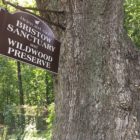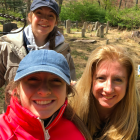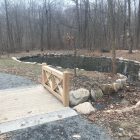Around Town
More Improvements Coming to Bristow Bird Sanctuary
|
More improvements at Bristow Bird Sanctuary—including improving trails, adding more boardwalk, building a new pavilion and adding a bird blind—will soon be underway. During the Conservation Commission’s meeting on Sept. 9, Chairman Chris Schipper announced that the town is actively bidding for phase two of the project, which will be privately funded and includes the construction of footings and a pad for the new pavilion. “I was very pleased to have seen the bid notice out today for Centennial Master Plan Phase 2,” Schipper said during the virtual meeting. “Let’s hope we get some interested responders who can undertake that phase.”
Director of Public Works Tiger Mann said the contractor who won the bid for phase one has been notified that bidding is now open for phase two.




